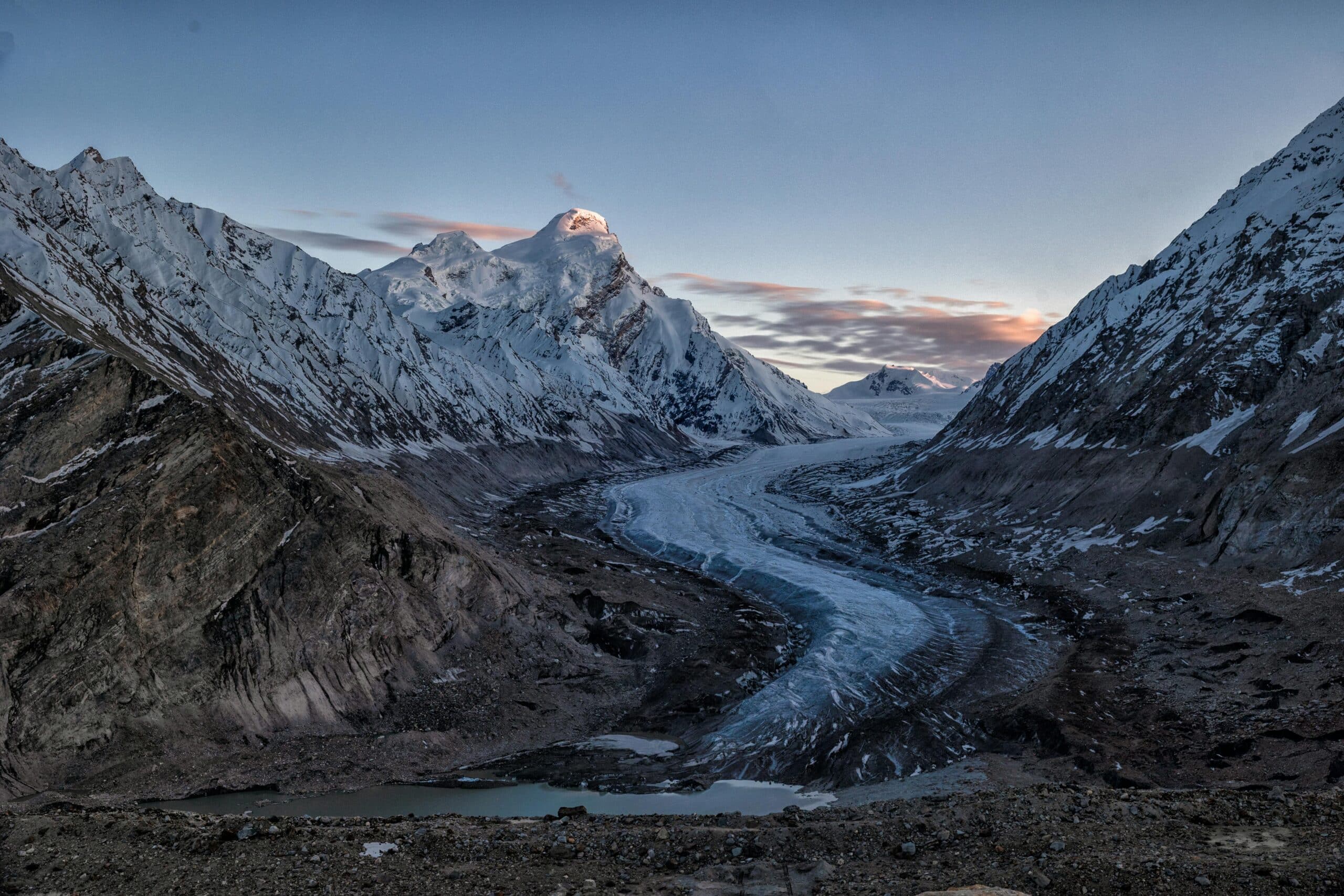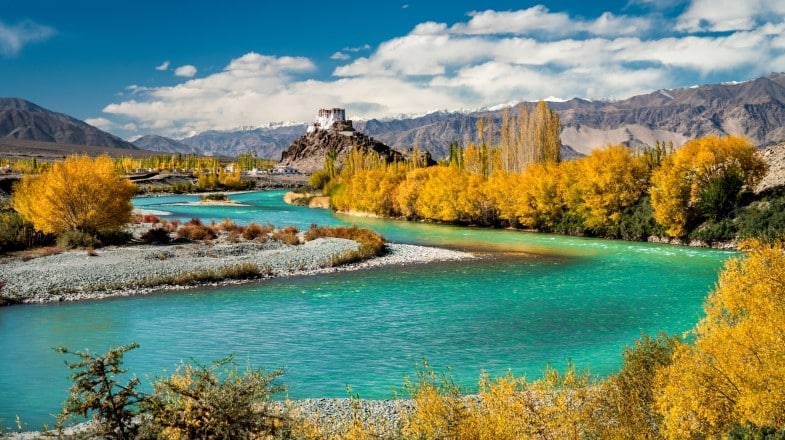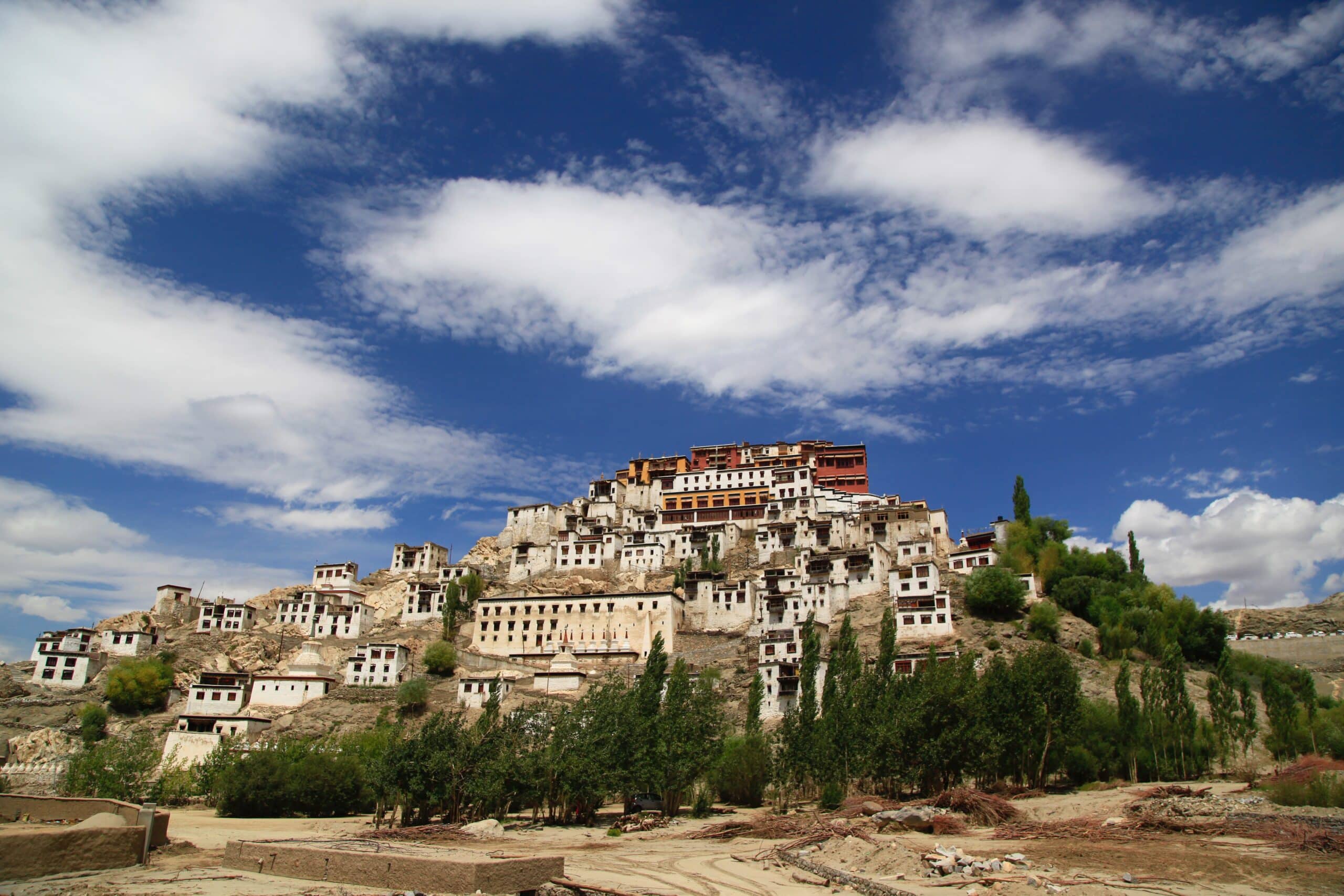Best Deals
Family Tours
Biking
Group Tours
Honeymoon
Luxury Tours
More Ladakh Packages
Ladakh Tour Packages
For an unforgettable journey to Ladakh, consider choosing Ladakh Tour Packages from Trekup India. They provide a diverse selection of customizable tours to Ladakh that cater to all types of travellers originating from Delhi, Mumbai, Chennai, or Bangalore. With over 60 plus tour options available, you can take advantage of exceptional offers and savings. Discover the key attractions in Ladakh through a variety of immersive tours and activities included in Trekup India’s Ladakh Tour Packages.
Whether you’re looking for a brief getaway or an extended expedition, a leisurely retreat or an action-packed adventure, Trekup India has a wide range of Ladakh vacation tours catering to your unique preferences. If you’re seeking an indulgent experience, be sure to explore our luxury Ladakh Tour Packages, featuring top-notch accommodations and thoughtful inclusions designed to enhance your Ladakh vacation. For more information on Ladakh travel, including the best time to visit, transportation options, and local attractions, feel free to browse our comprehensive guides and resources.
read more..
When booking a trip to Ladakh, travellers have the option to choose between air or road transportation, each offering a unique perspective. Flying from Delhi to Leh takes only half an hour, providing breathtaking views of the Himalayan mountains from the aeroplane window. The flight offers a once-in-a-lifetime experience, with rows of high peaks, glaciers, lakes, valleys, and plateaus stretching out as far as the eye can see. On the other hand, the Manali-Leh road trip is considered one of the top 10 road trips in the world, attracting bikers and road-trippers who plan their annual trips well in advance. The road trip takes travellers through challenging terrain, reaching altitudes of almost 18,000 feet.
The recently inaugurated 9.02 km Atal Tunnel has revolutionized travel between the picturesque Kullu-Manali region and the arid Lahaul valley by providing a convenient passage through the Pir Panjal range. This tunnel has significantly reduced travel time and eliminates the need to navigate the treacherous Rohtang Pass, making it a boon for adventure-seeking travellers. Keylong, Jispa, and Sarchu offer cosy accommodations for those who wish to take a break and acclimatize to the high altitude before continuing their journey on the 475 km stretch to Leh. This breathtaking road trip is a must-do for any thrill-seeking traveller.
Tourism in Ladakh began in 1974, but only brave adventurers visited the region until the early 2000s. The rise of low-cost airlines boosted tourism significantly, making Ladakh a popular destination for adventure and cultural experiences. Visitors now seek out unique activities like the Chadar Trek on Zanskar’s frozen river and exploring a Balti village in the Nubra valley near the Pakistan border.
Leh Ladakh, situated in the most northern part of India, is famous for its stunning scenery, distinct culture, and exciting things to do. Below are a few of the key sightseeing spots in Leh Ladakh:
Pangong Lake
Pangong Lake, located at an elevation of around 14,270 feet, is renowned for its shades of blue that constantly shift. Its popularity soared globally following its appearance in the Bollywood film “3 Idiots.”
Nubra Valley
Nubra Valley is well-known for its sandy dunes, two-humped Bactrian camels, and stunning scenery. It provides a unique and dreamlike atmosphere within the barren desert setting set against a snowy mountainous backdrop.
Magnetic Hill
Magnetic Hill is a fascinating phenomenon that challenges the laws of gravity, as it is said to draw vehicles upwards when they are placed in neutral. The site presents a distinct optical illusion and is a popular destination for visitors.
Tso Moriri Lake
Tso Moriri Lake, situated at a high altitude in Ladakh, is a serene and less crowded alternative to Pangong Lake. It provides peaceful surroundings and breathtaking mountain vistas.
Shanti Stupa
Located on a hill in Leh, the Shanti Stupa provides breathtaking views of both the city of Leh and the mountains that encircle it. This Buddhist stupa, with its white dome, was constructed with the intention of fostering peace and well-being.
Potala Palace
The regal Leh Palace, reminiscent of the iconic Potala Palace in Lhasa, provides a fascinating glimpse into the storied past of Ladakh’s royalty. Housed within its majestic walls is a museum that showcases an array of captivating artefacts and artworks, each one shedding light on the region’s vibrant cultural heritage.
Hemis Monastery
Hemis Monastery, situated in Ladakh, is renowned for being one of the most sizable and affluent monasteries in the region. It is famous for hosting the yearly Hemis Festival, displaying colourful murals, and housing an extensive assortment of ancient artefacts.
Zanskar Valley
Zanskar Valley is famous for its breathtaking scenery, historical monasteries, and demanding hiking trails, making it an ideal destination for thrill-seekers. The frozen Zanskar River provides a distinctive opportunity to embark on the Chadar Trek in the winter season.
Khardung La Pass
Khardung La Pass, renowned as one of the loftiest motorable passes globally, presents awe-inspiring vistas of the neighbouring peaks. It’s a haven for daredevil bikers, providing an exhilarating high-altitude driving adventure.
Alchi Monastery
Alchi Monastery, a centuries-old spiritual sanctuary, is renowned for its breathtaking artistry, including intricate murals, vibrant frescoes, and precious ancient scriptures. As one of the most ancient monastic institutions in Ladakh, its history stretches back to the 11th century, offering visitors a glimpse into a rich and storied past.
Leh Ladakh
Leh Ladakh offers a plethora of attractions beyond the ones mentioned. The region is a haven for adventure seekers, with opportunities for trekking, river rafting, and mountaineering. Additionally, visitors can immerse themselves in the rich Ladakhi culture and traditions, creating unforgettable memories.
Best Time to Visit Travel Leh Ladakh
The ideal time to explore Leh Ladakh largely hinges on your personal preferences and the experiences you seek. While the summer months of May to September are the peak tourist season, here’s a brief overview of the seasons and their corresponding advantages for travel:
Summer in Leh Ladakh
Summer in Leh Ladakh, which lasts from May to September, is the busiest time for tourists as the weather is pleasant. Daytime temperatures typically range from 15°C to 30°C (59°F to 86°F), making it perfect for sightseeing, trekking, and various outdoor pursuits. Most of the mountain passes, such as Khardung La and Chang La, are accessible during this season, facilitating road travel to and within Leh Ladakh. Additionally, popular festivals like the Hemis Festival and Ladakh Festival often occur during summer, offering visitors a chance to experience the cultural richness of the region.
Spring (March to April)
As the winter snow starts to thaw, Leh Ladakh awakens from its slumber, and the tourist season begins. The warming weather enables access to areas previously closed off due to heavy snowfall, and the thermometer registers a gradual rise in temperature, ranging from 5°C to 20°C (41°F to 68°F). The once-barren landscape transforms into a picturesque paradise, adorned with blooming flowers that add vibrancy to the breathtaking scenery. This season offers photography enthusiasts a unique opportunity to capture the striking contrast of snow-capped peaks and vibrant blossoms.
From September to November, Autumn
From September to November, Autumn’s mild climate brings pleasant temperatures, 10°C to 25°C (50°F to 77°F), ideal for a peaceful trip to Leh Ladakh. As the crowds disperse, the scenic views become even more breathtaking, providing an optimal time for trekking and exploration before winter’s chill sets in.
In Winter
Winter in Leh Ladakh, which lasts from December to February, is a period characterized by harsh weather conditions with extreme cold and heavy snowfall, particularly in higher-altitude regions. Temperatures can plummet well below freezing, sometimes dropping to as low as -20°C (-4°F) or even lower in certain areas. Several key roads, such as the Srinagar-Leh and Manali-Leh highways, are often closed due to snow accumulation, making it difficult to reach the area. Despite these challenges, winter presents unique opportunities for adventure enthusiasts and those seeking a distinctive experience, such as engaging in activities like ice skating, spotting snow leopards, and participating in local winter festivals. While the summer months (May to September) are generally considered the ideal time to visit Leh Ladakh for most tourists due to mild weather and better accessibility to attractions, each season has its allure and appeal, catering to different interests and preferences.
How to Reach Leh Ladakh
Travelling to Leh Ladakh can be an exciting adventure because of its isolated position and difficult landscape. Nevertheless, there are various transportation options to choose from based on your personal choices and financial means. Here are some popular methods for reaching Leh Ladakh:
By Air: The swiftest and most practical way to reach Leh is by air. Kushok Bakula Rimpochee Airport in Leh maintains strong connections to significant cities, including Delhi, Mumbai, Srinagar, and Chandigarh. Numerous airlines ensure regular flights to Leh, particularly during the peak tourist season, which spans from May to September. Upon arrival in Leh, it is imperative to acclimate to the high altitude, especially if you are arriving directly from a low-altitude location.
By Road: Those who crave adventure often embark on road trips to Leh Ladakh, which showcase the majestic Himalayas and numerous stopping points that highlight the natural beauty of the region. Two primary routes exist for reaching Leh by road: the Manali-Leh Highway, which originates in Himachal Pradesh’s Manali and travels through picturesque landscapes, majestic mountain passes like Rohtang Pass and Baralacha La, and charming towns such as Keylong and Sarchu.
The Srinagar-Leh Highway begins in Srinagar, Jammu and Kashmir. It guides travellers through the picturesque Kashmir Valley, Drass – the world’s second coldest inhabited area, and challenging high-altitude passes such as Zoji La and Fotu La. These roads are accessible during the summer season, usually from May to September, after the snow has thawed and conditions are considered safe for travel. It is recommended to use a strong vehicle like a four-wheel-drive SUV for the journey and to stock up on supplies since amenities along the route may be scarce.
By Bus: Bus services between Leh and cities such as Srinagar and Manali are available during the tourist season, operated by both government-run and private companies. The bus journey can be lengthy and exhausting, typically lasting 2-3 days, depending on the specific route and road conditions. It’s important to note that bus schedules may not be as consistent or dependable as other transportation options, so it’s advisable to plan and secure tickets in advance.
By Motorcycle or Bicycle: Alternatively, motorcycle and bicycle enthusiasts may opt to travel to Leh Ladakh on their vehicles, relishing the freedom to explore at their own leisurely pace and embrace the excitement of navigating through challenging mountainous landscapes.
In cities such as Manali and Srinagar, individuals can rent motorcycles or bicycles and also have the option of joining guided motorcycle tours for a more structured experience. It is important to carefully plan your journey regardless of the transportation mode you select, especially due to the high altitude and varying weather conditions in the area. Acclimating to the altitude is crucial to avoid altitude sickness, so it is advisable to ascend gradually to Leh Ladakh and give your body time to adjust.
Ladakh FAQ's
How much will a Ladakh trip cost?
The expenses for a trip to Ladakh can differ significantly depending on various factors, including transportation, accommodation, duration, activities, and personal spending habits. Here’s a detailed breakdown of the main costs to help you plan your budget:
Getting to Leh Ladakh: Flight prices can differ depending on where you’re coming from when you book and when you’re going. They tend to be pricier during the busy season (May/September). If you’re driving, consider fuel, car rental (if needed), permits, tolls, and driver/tour costs.
Lodging: Lodging choices in Ladakh vary from economical guesthouses and homestays to upscale hotels and resorts. The price of staying at a place will be determined by the kind of accommodation you opt for and where it is situated.
In the busiest tourist period, lodging rates might increase, so it is recommended to make reservations beforehand to obtain more favourable offers.
Food and Dining: The cost of food will vary based on your dining choices and the places where you decide to eat. Tibetan and Ladakhi cuisine in the area is usually reasonably priced, offering a variety of options from casual street vendors to more upscale dining establishments. When dining at eateries in popular tourist spots, anticipate paying more than in smaller rural areas.
Entry Permits and Fees: In Ladakh, specific regions near the international border necessitate permits for access. The price of permits can differ based on the area and whether you’re journeying solo or with a guided group. Additionally, some sightseeing spots may charge an entry fee, so it’s crucial to plan for these costs.
In Ladakh, there are plenty of things to do and places to visit, including trekking, rafting, visiting monasteries, enjoying camel rides, and immersing yourself in the local culture. The prices for these activities may differ based on variables like how long it lasts, gear rental, and fees for guides. If you opt for guided tours or adventure packages, the expenses for these activities might be covered. However, if you’re planning to explore on your own, make sure to allocate a budget for each activity accordingly.
Various Costs: Different costs include purchases like souvenirs, snacks, bottled beverages, Wi-Fi, and tips. It’s advisable to set aside funds for unexpected costs or emergencies, such as medical care or sudden travel expenses. In general, a thrifty traveller may allocate around $500 to $1000 for a simple 5-7 day excursion to Ladakh, while those seeking more comfort could spend between $1000 to $2000 or above, depending on their choices and planned activities. Travellers opting for luxury should anticipate significantly higher expenses. Careful planning of your Ladakh travel budget is crucial, considering all potential expenditures, to ensure a memorable and worry-free trip.
Which is the best month to go to Ladakh?
The summer season, which spans from May to September, is typically favored by tourists because of its delightful weather and ease of travel. However, each season has its own unique appeal and points of interest for visitors.
Can I swim in Pangong Lake?
Reasons why it’s not advisable to swim in Pangong Lake.
- Pangong Lake’s high elevation, reaching 14,270 feet (4,350 meters) above sea level, results in frigid water temperatures year-round. The lake’s cold water can pose a significant risk of hypothermia, particularly during the winter months when the temperature frequently falls below freezing. Swimming in such icy water can be extremely dangerous, especially for individuals not adapted to such low temperatures.
- Acclimatization is crucial before participating in strenuous activities at high altitudes, such as swimming in lakes like Pangong, to avoid worsening altitude sickness symptoms caused by reduced oxygen levels.
- Pangong Lake’s isolated location, nestled within a rugged landscape, presents limitations for leisure activities like swimming. Lacking defined areas for swimming, lifeguard supervision, and amenities for changing or showering, visitors must be prepared for a primitive experience.
- Pangong Lake is a delicate and thriving ecosystem that necessitates careful preservation. Engaging in aquatic activities such as swimming can jeopardize the well-being of the lake’s inhabitants, including migratory birds and other aquatic species, and disrupt the ecological balance.
Although swimming is not recommended in Pangong Lake, visitors can still appreciate the breathtaking views, go for relaxing walks by the lakeshore, and partake in activities such as photography, camping, and birdwatching. It is important to show respect for the environment and adhere to the local rules and recommendations to maintain the beauty of this natural marvel.





